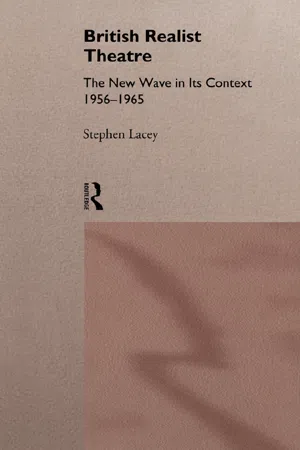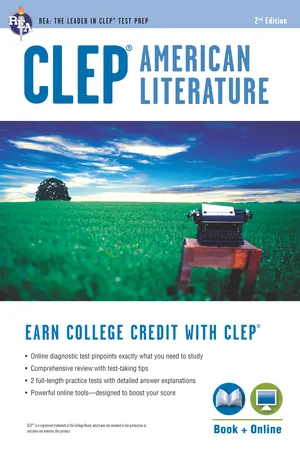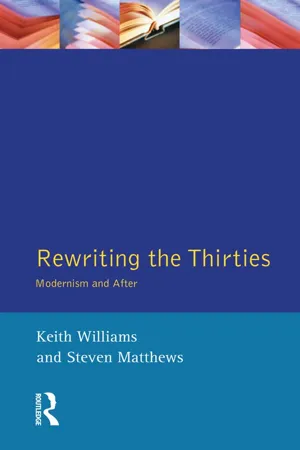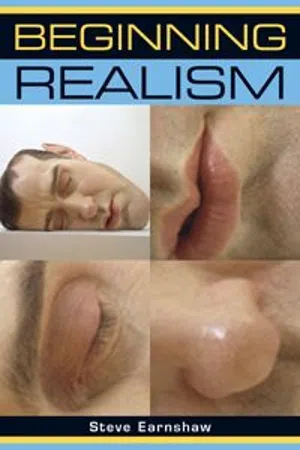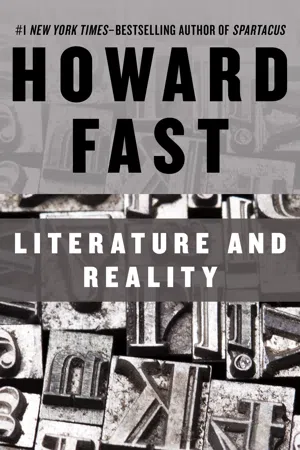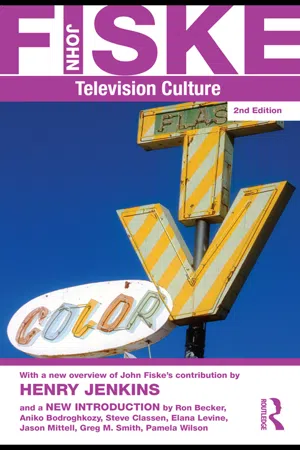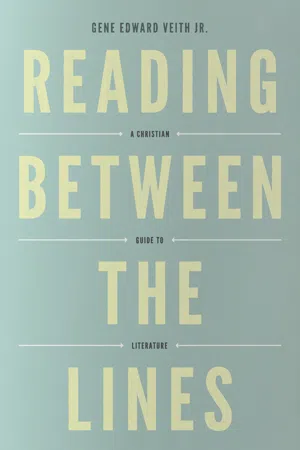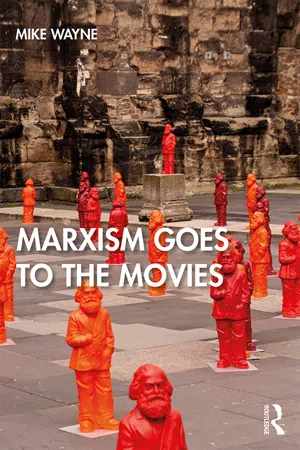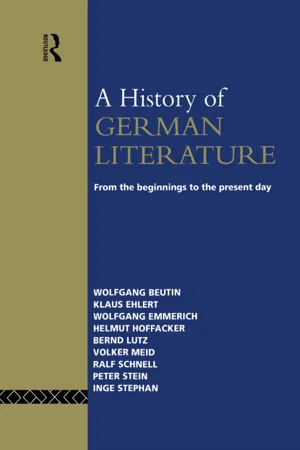Literature
Social realism (1930s-1980s)
Social realism in literature from the 1930s to the 1980s was a movement that aimed to depict the everyday lives of ordinary people, often focusing on social and political issues. Writers sought to provide a realistic portrayal of society, addressing topics such as poverty, inequality, and the struggles of the working class. This literary movement emphasized the importance of social consciousness and the need for social change.
Written by Perlego with AI-assistance
Related key terms
11 Key excerpts on "Social realism (1930s-1980s)"
- Noriko Mizuta Lippit(Author)
- 2017(Publication Date)
- Routledge(Publisher)
Politics and Literature: The Debate Over Socialist Realism 9 During the 1920s and 1930s, writers and artists in Japan actively debated the proper relationship between politics and literature, between social values and artistic values. The dispute over socialist realism appeared as the culmination of this debate. For the Japan Communist Party (JCP) and those writers committed to socialist revolution, these issues and the question of socialist realism were naturally of central concern. The question of the relation of art and literature to society or of world view to literary creation, however, was of great concern to nonproletarian writers as well, particularly to those humanist and modernist writers who, discontent with the dissociation of art from society in the decadent literature and autobiographical I-novels then dominant, were trying to make art once again vitally relevant to social reality and the modern human condition. 1 The question of literary realism had been a major subject of debate from the time of Tsubouchi Shōyō's essay "The Essence of the Novel" in 1885, 2 and with the development of the I-novel as a distinct genre in the twentieth century, the debate often took the form of critiques of the I-novel. An outgrowth of naturalism, the I-novel had become the predominant novelistic genre in the "modernization" of Japanese literature from the turn of the century. Narrowing their concerns to the exploration and unveiling of their own internal worlds, the writers of the I-novels had lost vital touch with the reality outside of themselves- eBook - ePub
British Realist Theatre
The New Wave in its Context 1956 - 1965
- Stephen Lacey(Author)
- 2002(Publication Date)
- Routledge(Publisher)
3: REALISM, CLASS AND CULTURE
The New Wave is often referred to as a realist theatre. The terms realism and ‘social realism’ are omnipresent in critical discussion of the period; and although ‘realism’, even in its most expansive definition, does not adequately describe every manifestation of the new drama, it is a term that resonates throughout the late fifties and early sixties, partly because it suggests a range of ambitions (in the plays, the writers and the companies) that are not simply theatrical but are political and social as well. Realism is a critical term that is used of other cultural forms, too, and the resurgence of realism in the cinema and the novel as well as the theatre testified not only to the existence of roughly comparable aesthetic strategies but also of a similar cultural politics. Realism usually becomes an issue in a culture when the representation, exploration and analysis of a society is on the agenda, and this is the principal reason why realism will have a significant presence in this book.REALISM: PROBLEMS OF DEFINITION
The familiarity of realism, wherever we encounter it, seems to render its meaning uncontroversial and self-evident; the term is used so often, we must all know what it means. However, like many critical terms that have such a near-universal currency, realism is deployed in frequently ambiguous and confusing ways, concealing a complex history and a set of often contradictory positions; there is social realism, socialist realism, neo-realism in the cinema, surrealism and magical realism, and dramatists as different as Ibsen, Chekhov and Brecht have considered themselves, or have been considered, realist at some point in their development.In the theatre, arguments about realism normally emerge around ‘content’ rather than ‘form’; as Raymond Williams has observed, realism has typically meant ‘the injection of new content into an orthodox dramatic form’ (Williams 1978:498). In film, this emphasis has sometimes been reversed, and realism has been seen in terms of a specific filmic language, a particular construction of ‘the real’, to be defended or (more often) attacked in terms of its adequacy to the task (see MacCabe 1974). It is tempting to respond to this plethora of different usages by abandoning the term altogether and opting for a less comfortable but more precise vocabulary. Certainly, any attempt to arrive at a fixed and invariable definition will be a wasted journey; it is much more useful to think of realism not as a fixed category, but as a series of debates, which are historically variable, which operate differently across different cultural forms, but which have a set of common issues at their core. - eBook - ePub
- Jacob Stratman(Author)
- 2016(Publication Date)
- Research & Education Association(Publisher)
Chapter 4 Realism and Naturalism (1865–1910) REALISMI am making a slight change to the dates that the College Board (creators of the CLEP tests) states in its literature. Some scholars believe that realism as a literary movement began closer to 1870, but many more scholars point to the beginning of the Civil War as the beginning of American literary realism. Bullets, bloodshed, and brotherly bickering ushered in a reality that reacted strongly to the idyllic existence American romanticism painted. Then, after the battles ended, America began to grow and to expand its urban areas at the expense of its rural areas. The Industrial Revolution and increased European immigration caused a boom in urban populations. Post–Civil War America found itself in an existence of disillusionment and cynicism. Major technological breakthroughs also occurred at the end of the nineteenth century: the invention of the telephone, the completion of the transcontinental railroad, and, of course, the introduction of the automobile. So literary realism is the label we give to those works that attempt to portray life as it actually is and not simply as the writer wishes (the latter being idealism). The brief historical information just mentioned is important because those incidents influenced writers who focused their plots and characters on the very immediate happenings of people in particular cultural moments. Realism is very interested in the mundane episodes of middle-class life; therefore, realist novels tended to lean towards social reform. Also, writers took it upon themselves to critically comment on America’s politics, economics, industry, and social issues, as well as gender, class, and race issues.NaturalismLiterary naturalism is said to be a product of scientific determinism. Here’s a simple definition: You are controlled by your environment. There is no hope for you. Dreams come and dreams go. You are controlled by your gender, race, socioeconomic standing, and ethnicity. There is a glass ceiling and you will hit it every time you venture beyond your status. Depressing, huh? Yes, it is. There is more to the literary movement than that, of course. Naturalism was greatly influenced by the work of Charles Darwin, Isaac Newton, Karl Marx, and Emile Zola, and other naturalists who posited that humans are not that different from animals in that they merely respond to natural and environmental forces without fully understanding the forces or their reactions to them. What is also important about naturalist fiction is that the author and the narrator are amoral in their depictions of the characters and the plot: they do not judge or editorialize; they merely observe. - eBook - ePub
- Raymond Williams(Author)
- 2013(Publication Date)
- Parthian Books(Publisher)
7 Realism and the Contemporary NovelThe centenary of ‘realism’ as an English critical term occurred but was not celebrated in 1956. Its history, in this hundred years, has been so vast, so complicated and so bitter that any celebration would in fact have turned into a brawl. Yet realism is not an object, to be identified, pinned down and appropriated. It is, rather, a way of describing certain methods and attitudes, and the descriptions, quite naturally, have varied, in the ordinary exchange and development of experience. Recently, I have been reconsidering these descriptions, as a possible way of defining and generalising certain personal observations on the methods and substance of contemporary fiction. I now propose to set down: first, the existing variations in ‘realism’ as a descriptive term; second, my own view of the ways in which the modern novel has developed; third, a possible new meaning of realism.There has, from the beginning, been a simple technical use of ‘realism’, to describe the precision and vividness of a rendering in art of some observed detail. In fact, as we shall see, this apparently simple use involves all the later complexities, but it seemed, initially, sufficiently accurate to distinguish one technique from others: realism as opposed to idealisation or caricature. But, also from the beginning, this technical sense was flanked by a reference to content: certain kinds of subject were seen as realism, again by contrast with different kinds. The most ordinary definition was in terms of an ordinary, contemporary, everyday reality, as opposed to traditionally heroic, romantic or legendary subjects. In the period since the Renaissance, the advocacy and support of this ‘ordinary, everyday, contemporary reality’ have been normally associated with the rising middle class, the bourgeoisie. Such material was called ‘domestic’ and ‘bourgeois’ before it was called ‘realistic’, and the connexions are clear. In literature the domestic drama and, above all, the novel, both developing in early eighteenth-century England with the rise of an independent middle class, have been the main vehicles of this new consciousness. Yet, when the ‘realist’ description arrived, a further development was taking place, both in content and in attitudes to it. A common adjective used with ‘realism’ was ‘startling’, and, within the mainstream of ‘ordinary, contemporary, everyday reality’ a particular current of attention to the unpleasant, the exposed, the sordid could be distinguished. Realism thus appeared as in part a revolt against the ordinary bourgeois view of the world; the realists were making a further selection of ordinary material which the majority of bourgeois artists preferred to ignore. Thus ‘realism’, as a watchword, passed over to the progressive and revolutionary movements. - eBook - ePub
Rewriting the Thirties
Modernism and After
- Keith Williams, Steven Matthews, Keith Williams, Steven Matthews(Authors)
- 2014(Publication Date)
- Routledge(Publisher)
CHAPTER THREEIllusion and Reality: the Spectre of Socialist Realism in Thirties Literature
PETER MARKSThe literary culture of the thirties sometimes suggests an anarchic Speakers’ Corner: any writer able to put pen to paper appears to have had musings, complaints and analyses speedily published. Opinions, it seems, were as regularly produced as poems. The preferred (and certainly the most accessible) soapboxes for such pronouncements were periodicals and weeklies, some already established, others worked up in response to the decade’s literary and political imperatives. These journals provided swift access to sometimes small, but often well-defined audiences, enabling vigorous consideration of the interplay between literature and politics. Periodicals allowed for rapid debate on crucial matters of the moment, matters which might develop in ways unforeseen by critics and writers. Free from the revisions of hindsight, positions put forward in periodicals offer valuable contemporary records with which to consider important, though often short-lived, disputes.The potential for Socialist Realism in British literature constitutes such a dispute. Socialist Realism might be seen as a spectre haunting European literature during the thirties and beyond, though its impact varied measurably from nation to nation (see Scriven and Tate 1988). In Britain it certainly commanded advocates, but the evidence from periodicals suggests that the impact of the approach was not as pronounced as its supporters expected, or as its opponents feared. Certainly, in the politically engaged Left Review , fiery debates raged over something approaching Socialist Realism. Even there, however, views were anything but homogeneous, and no clearly defined method was prescribed. Additionally, the very absence of debate in other periodicals suggests a wider indifference to, or ignorance of, Socialist Realism. Beyond the heat (if not the light) of disputes in Left Review - eBook - ePub
- Steven Earnshaw(Author)
- 2013(Publication Date)
- Manchester University Press(Publisher)
8 Theorists of Realism Introduction In this chapter I aim to give a sense of some of the most important critical work on literary realism from the mid-twentieth century to the present. The field is complex, contributing no doubt to the belief that realism is a ‘slippery’ term, and there can be no attempt here to be comprehensive. I begin by giving a sketch of the different channels of thought and arguments, and also place them in relation to the discussion on the preceding pages. One aspect that will emerge as significant, and which has not been quite so apparent as yet, is the political nature of discussions about realism. Although some of the earlier discussions listed below (1930s–1950s) might be viewed as past their sell-by date, particularly those which depend heavily on the viability of socialist structures, I think that there is more here than just historical interest in the fortunes of realist criticism over the last seventy years or so. It might be possible to argue for a ‘poetics of realism’ that aims to stand outside the political dimension, but that would be to miss the fact that as an aesthetic realism has always had a considerable political force, either as part of the status quo or as a challenge to existing political, cultural and social orders. Simultaneously, the ‘poetics’ strand of literary criticism that sees its task as the analysis and categorisation of technical features remains a persistent feature in literature on realism. 1930s–1950s Auerbach’s Mimesis (1946) is a seminal work in the field of literary realism, and close in time-period is Watt’s equally seminal The Rise of the Novel, published in 1957, although drawing on work that he had begun twenty years earlier. Both of these books aim for a poetics of realism, that is, both books present realism as a particular ‘form’ comprised of specific techniques, developed and utilised by writers as the result of particular philosophical outlooks embedded within social practices and structures - eBook - ePub
- Howard Fast(Author)
- 2011(Publication Date)
- Open Road Media(Publisher)
Candyman Beechum. This is the story of a Negro worker, paid off at the end of the week, and coming into a southern town for a round of pleasure with his girl and a drink or two. How well Caldwell describes the healthy vigor of this man, his joy in the act of living. He comes into town, buys a drink, and then, unprovoked, the town marshal shoots him down. As Candyman Beechum lies on the floor, dying this horrible and useless death, the ebbing life force within him distills from that final dissolution a certainty of ultimate victory, a unity with the rising strength of his people, hope where seemingly no hope is possible. This is conscious and brilliant use of realism, for here, without preachment or dogma, in so few lines, is the essence of Negro oppression and Negro liberation. It was around this content that Caldwell, always a writer of great talent, reached the highest levels of style and form. Today, even the bourgeois critics, never very hard to please, are inclined to compare both his form and his style to pulp writing. It is not that Caldwell lost his power to write; he lost his touch with reality; and it is with the new reality of today that he must come to grips if he is to create literature of worth and stature, instead of beating upon an empty drum.One of the major differences between realism and the superficial realistic method is that the first is the result of struggle and the second is a retreat from struggle. Even in the best of times, the truth does not hang like a ripe fruit, waiting for anyone to pick it. Truth must be fought for and always will have to be fought for, regardless of the nature of the particular society in which it may exist; it is only the form of the struggle that will change. Today, a writer must literally grapple with reality, for the sort of bourgeois realism that was possible not too long ago is becoming more and more limited today. A new literary force is at large in the world of today, socialist realism—and it is already apparent that the result of this will be a new literature, compounded out of a new world outlook and judged by new standards.Socialist realism is in a state of beginning, and like all things in the process of being born, only a small sprout of the new plant is visible. Yet it is well worth examining, for contained in this seed is the mighty tree of tomorrow.Passage contains an image 11
AS EACH NEW HISTORICAL era appears, the limits of realism are extended; not only does life itself become richer and broader, but literature deepens and extends itself in every fashion. But in every case of the past, this deepening and broadening process was contained by the various limitations of the specific society. In a very literal sense, the economic chains which bound men in the past—and which bind so many of them today—also bound their literary products. - eBook - ePub
- John Fiske(Author)
- 2010(Publication Date)
- Routledge(Publisher)
Realism can be defined in a number of ways, for it is actually a fairly slippery concept capable of a variety of inflections. Ian Watt (1957) and Raymond Williams (1977) tend to define it by its content. Watt traces its origins to the rise of the novel in the seventeenth and eighteenth centuries. Realism developed alongside empiricism, individualism, humanism, and the bourgeoisie, so it is not surprising that it should share characteristics with all of them. For Watt realism depends on the belief in an objective reality that can be accurately experienced by the human senses: this reality is made up of an infinity of unique objects, people, places, and actions. So for him realism characteristically represents particular events happening to individualized people in specified places and time spans. The senses and experience of the individual are seen as the prime way of making sense of this universe of phenomena, and if social, moral, religious, or political ideas intrude, they must always be expressed within the forms of individual experience.Raymond Williams (1977), whose historical perspective covers the nineteenth and twentieth centuries, lists three main characteristics of realism in drama: he finds that it has a contemporary setting, that it concerns itself with secular action—that is, with human action described in exclusively human terms—and that it is “socially extended.” By this he means that it deals with the lives and experiences of ordinary people, not kings and social leaders; in particular, that inflection of realism which we may call “social realism” and which Williams’s definition is inclining towards deals with the working class’s experience of subordination in an industrial society. In so far as this is portrayed sympathetically (though not uncritically), Williams is able to add a fourth characteristic of realism, that it consciously interprets this experience from a particular political point of view, normally from the left. The first three characteristics explain realism’s particular suitability for television: television’s audience, like realism’s content, is socially extended, unlike the more selective audiences of theater or many cinema films; television is particularly well suited to representing human action in human terms—its small screen and comparatively poor definition lead it to concentrate on mid-shots and close-ups of people acting, reacting, and interacting. Its repetition and its origins in studios rather than exterior locations lead it to rely on familiar interior settings of a human domestic scale that fit comfortably into the family room within which it is usually viewed. Television typically deals with the contemporary—this holds good as a generalization despite the popularity of historical drama as a genre. Indeed, critics like Feuer (1983) and Heath and Skirrow (1977) have identified as one of the defining characteristics of television its “nowness,” the sense of being always “live” which it constantly tries to promote. Film presents itself as a record of what has happened, television presents itself as a relay of what is happening. Even at the micro level this sense of the present is conveyed by television’s technical processes. Cheaply produced dramas, such as soaps and sitcoms, are normally shot with multiple cameras in the studio and have limited or no post-production editing. This means that the time taken to perform an action on television coincides precisely with the time taken to perform it in “real life”—dead time in the middle cannot be edited out as it is on film. This absence of authorial (or editorial) intervention adds subtly to the sense of realisticness, the sense that the camera is merely recording what happened, and to the sense of liveness, that it is happening now—the same perfect match between represented television time and the lived “real” time of the viewer is, after all, characteristic of genuinely live television, such as sport. - eBook - ePub
Reading Between the Lines
A Christian Guide to Literature
- Gene Edward Veith Jr.(Author)
- 2013(Publication Date)
- Crossway(Publisher)
If the social realists focused on society, sometimes at the expense of the individual, another branch of realists delved into the human mind to create a psychological realism. The rise of modern psychology encour aged the view that, as far as human beings are concerned, the mind is the locus of reality. That is, reality is mediated through a person’s con sciousness, which is shaped by early experiences and innate mythical pat terns as well as by the environment. Writers such as Henry James explored the infinitely subtle nuances of individual personalities. James Joyce invented the stream-of-consciousness novel, reproducing the inner life of his characters and relating them to primal myths and psychologi cal archetypes. In doing so, he pushed realism itself closer to fantasy.The best modern realistic novelists draw on both the outer and the inner realities. William Faulkner captured the people and places of the backwoods South in vivid detail, but he also plunged into the minds of the characters, reflecting the complexity of their thoughts and emo tions in the very style of his prose. Faulkner’s realism anatomized the social structure of the South while at the same time affirming the com plexity and the dignity of his characters. Faulkner is profoundly demo cratic in the respect he shows for ordinary people. His “white trash” share-croppers, black farm hands, and seedy aristocrats lack refinement, but he never belittles them. Instead, he reveals that ordi nary life contains material enough for the highest art.The same can be said for Hemingway and Steinbeck, the other great modern American realists. Hemingway’s style, nearly opposite to Faulkner’s, is spare, terse, and cut to the bone. Disdaining flowery descriptions and commentary by the narrator, Hemingway’s mastery of dialogue and point of view create the effect of immersing the reader in the world of the characters. Steinbeck was more interested in the social problems of the country, but he never neglected the individual, whom he set against the backdrop of a natural world evocatively described. Steinbeck often turned to the Bible to amplify his themes (consider his titles East of Eden and Grapes of Wrath), and, like Faulkner, operated with a strong moral sensibility.From a Christian point of view, realism can be a way of coming to grips with the world and the human condition. Christianity is not primarily subjective, but objective. That is, it is not simply a matter of mystical feelings experienced in the private sanctum of the self. Rather, Christianity is the revelation of a God who exists independently of the self, a God who created the external world, who became incarnate in that world, who acts in history, and who calls His people to become involved in society through concrete moral actions. Christians will therefore be drawn to literary realism, interpreting what they read the same way they interpret what they experience, in light of their faith. In this regard, it does not matter too much if the author of a realistic novel is a Christian or not. If the novel is truly realistic, if it reflects the world as it actually is, the Christian reader can notice the same patterns of creation, sin, and love evident everywhere in “real life.” - eBook - ePub
- Mike Wayne(Author)
- 2019(Publication Date)
- Routledge(Publisher)
Within the Marxist tradition, naturalism represents an approach to social reality that falls short of realism proper. The most penetrating critique of naturalism in the Marxist tradition was developed by Georg Lukács in relation to literature. He traced the development of realism to the emergence of the historical novel in the early nineteenth century. The specifically historical novel requires the ‘derivation of the individuality of characters from the historical peculiarity of their age’, 29 which means exploring the relationship between the character and their environment. According to Lukács, the earlier eighteenth-century realistic social novels had not yet developed a sense of historical time and place, which Lukács associates also with an ability to explore or reveal when and how the contemporary world developed as it has. One of the great features of realism is its ability to show process, something which the Cuban revolutionary filmmaker, Julio Garcia Espinosa also insisted on: ‘We maintain that … cinema must above all show the process which generates the problems,’ he wrote. 30 Prior to the historical novel proper, Swift, Voltaire and Diderot set their satirical novels in fantasy or indeterminate places and the penetrating insights they bring are of their own society but which they cannot represent in historical terms. The later development of a historical sense understands ‘history as the concrete precondition of the present’. 31 For Lukács, our ability to see and think historically is itself historically determined. It was the French Revolution, the revolutionary wars and the rise and fall of Napoleon, which for the first time made history a mass experience and moreover on a European scale - eBook - ePub
A History of German Literature
From the Beginnings to the Present Day
- Wolfgang Beutin, Klaus Ehlert, Wolfgang Emmerich, Helmut Hoffacker, Bernd Lutz, Volker Meid, Ralf Schnell, Peter Stein, Inge Stephan, Claire Krojzl(Authors)
- 2005(Publication Date)
- Routledge(Publisher)
Although Heinrich Böll and Günter Grass, Martin Walser, Uwe Johnson and Siegfried Lenz were and remain to this day the outstanding individual figures of the 1960s, there were also a number of major literary trends and developments that were of equal importance in shaping the era. One of the key words describing prose between 1961 and 1969, for example, is ‘descriptive literature’. Despite the derision that frequently accompanied this term at the time, it is nevertheless a highly apt definition for a broad spectrum of divergent prose texts whose stylistic form shared the common feature of a desire to come close to reality, consciousness, situations and actions. They constitute realistic narrative approaches deriving not from a socially critical perspective, but rather expressing social factuality itself in a critical way, and with extreme density and concentration.The most systematic and far-reaching attempt to make a breakthrough towards realistic descriptive literature was made from 1964 onwards by the so-called ‘Cologne School’ of New Realism. Dieter Wellershoff, initiator, mentor and theoretician, as well as literary exponent of this group (Ein schöner Tag—A Lovely Day, 1966; Die Schattengrenze—The Shadow Frontier, 1969), defined its agenda by precisely demarcating it from the fictional nature of grotesque and satirical prose: Tantastic, grotesque, satirical literature criticised society by confronting it with an exaggerated, distorted picture. New Realism criticises society immanently by means of precise scrutiny. It is a form of criticism deriving not from opinions, but from the production of experience.’ This attempt at self-definition, however, only inadequately encompasses the forms in which New Realism was actually put into practice. Within the domain of Realism, authors such as Günter Herburger (Eine gleichmässige Landschaft—A Symmetrical Landscape, 1964; Die Messe—The Mass, 1969; Jesus in Osaka, 1970), Günter Seuren (Das Gatter—The Lattice, 1964; Lebeck, 1968), Rolf Dieter Brinkmann (Die Umarmung—The Embrace, 1965; Raupenbahn—The Caterpillar Track, 1966; Keiner weiss mehr—Noone Knows Any More, 1968), as well as Wellershoff himself, represent substantially divergent writing styles that throw into doubt rather than confirm Wellershoff’s definition of realistic writing. This is most apparent in the writing methods of Rolf Dieter Brinkmann, which extended into an objectivisation of the objects being narrated whereby the narrative barely stopped short of abolishing itself. Spheres of life and situations of existential importance (birth, love, death, sexuality), are represented by making them represent and express themselves. Rolf Dieter Brinkmann’s posthumously published collage volume Rom Blicke (Rome Vistas),
Index pages curate the most relevant extracts from our library of academic textbooks. They’ve been created using an in-house natural language model (NLM), each adding context and meaning to key research topics.

